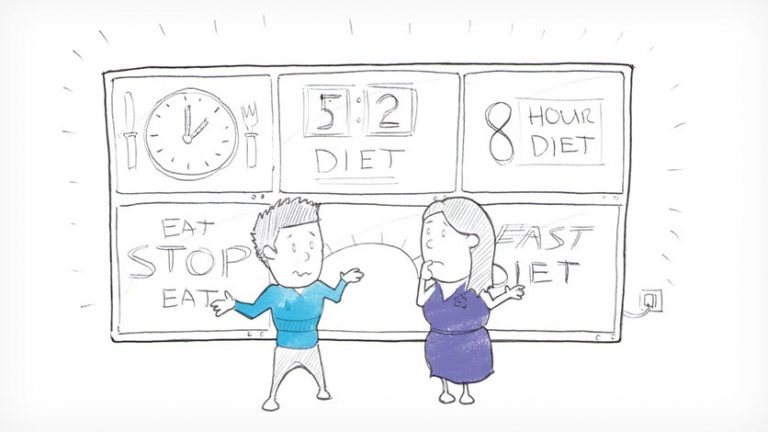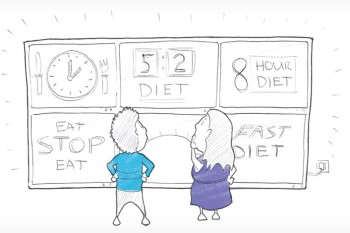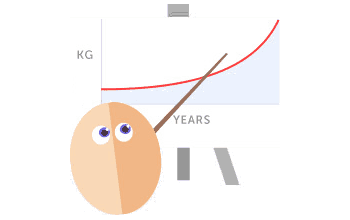Flexible fasting: invent your own intermittent fasting method
If none of the fasting methods described in the previous pages appeal to you, why not invent your own? After all, intermittent fasting just means abstaining from food for a while – to allow your body to start using up your fat stores and to get on with some repair work. You can easily create your own method following these general principles.
Time between meals
It takes about 5 hours for you to digest a meal (depending on the size of the meal) and a further 5 hours before your body really enters the fasting state when all the great changes to your biochemistry take place. To get the best out of fasting, therefore, you need to have at least one 12 hour period with no calorie intake. Extending the fast to 16 or 20 hours is even more beneficial.
Learn more about the science of fasting
Fast/feast
Intermittent fasting is not just about the time you go without food, but also about how you eat when you are not fasting. If you calorie restrict yourself every day you’ve turned it into a standard ‘just eat less’ diet and you will feel deprived and be far more likely to stop doing it. Further, when we eat well we reassure our bodies that we are not in a famine situation and this helps to prevent various changes happening in our bodies that put pressure on us to over-eat. So, ensure you alternate your fasting times with periods when you can eat normally. Remember, you are relying on the feasting times to get all the nutrients you need, so while you can eat what you want, be mindful of what choice you are making!
Learn more about what and when to eat
How many times a week?
In your enthusiasm to maximize the benefits of fasting, make sure you don’t do too much. Use this general guide to how often to fast:
-
if you’re fasting 5–7 times per week keep the fasts less than 16–18 hours.
-
if you’re fasting 3–4 times per week fasts can be up to 20 hours long
-
if you’re fasting 1–2 times per week fasts can be up to 24 hours long
-
if you’re fasting once a week it can be up to 60 hours long.
There will be times when fasting is not a good idea. Learn more about fasting and stress.
Self-experimentation
Experiment with different ways of fasting to see which one suits your current lifestyle and give you the results you want. But don’t be afraid to change it whenever your life changes. This is what makes intermittent fasting such a great way of eating – you make your diet fit your life not make your life fit the diet!
Whatever fasting method you follow, you can use these principles to adapt things anytime that life gets in the way of your normal schedule.
Why I like to mix my fasting methods
Forum member rawkaren says “I work with all fasting methods depending upon what is going on in my life and how I feel. 16:8 keeps me in check especially when I’m travelling and hard to monitor intake, 5:2 for when I don’t need to think too hard about weight loss and 4:3 or ADF when I’m in the mood for going a bit faster. Mixing it up keeps it fresh too.”













